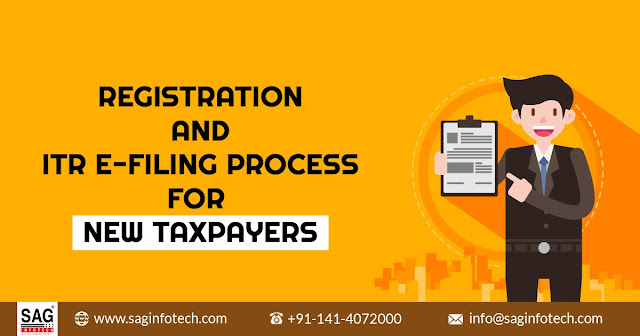Do you have an Indian nationality with an annual gross taxable income exceeding Rs 250000? Do you have any moveable or immovable property here? If it is then you ought to furnish an ITR every year. New assessee might get confused when they furnished an income tax return for the first time. But online media would have incurred the process easier.
ITR E-filing
ITR is directed to the annual statement that tells you about the tax heads of your income. The same revenue could arrive from a wage, capital gains, business income, house rent, or through additional sources.
If you are filing your ITR for the first time then you can read the article where the process for the same is mentioned. The ITR e-filing process is easier and faster and this could take place from an individual's home or office.
Via electronic means, you could save money by filing your ITR as you do not require to hire any other person who does it for you. Filing taxes would be simpler than it seems. Below is the procedure to coordinate you for furnishing Online ITR.
Needed Documents
You must need the below-mentioned documents with you prior to starting with the ITR registration and filing process:
- PAN
- Aadhaar Number
- Bank account details
- Form 16
- Other Income information
- Investments details (if any)
What is the Method to Register Yourself at the Income Tax Portal?
When filing the tax for the first time, the initial step is, to register yourself on the portal. It is essential to furnish the ITR prior to the ITR filing due date. 31st July would be the last date for income tax return filing.
Comply with the below process to register yourself on the portal
Step 2: Tap on 'Register' to enroll yourself after that, tap on 'Taxpayer'
Step 3: Insert your PAN particulars, you must ensure that the details are suitable and tap on 'Validate'. Then, tap on 'Continue'
Step 4: Insert your information such as name, gender, address, and others.
Step 5: Now, furnish your contact particulars like e-mail ID and registered mobile number
Step 6: Post filling out the form, verify all details and then tap on 'Continue'
Step 7: Once you confirm the particulars, a Time Password (OTP) will be sent to you on your registered e-mail ID and mobile number
Step 8: Insert the received OTP
Step 9: After verifying the OTP, you will get redirected to a new window, which asks you to validate the information given by you
Step 10: You are enabled to edit the information if there are any errors. After that, another OTP will be sent in order to validate the changes.
Step 11: In this step, you are obligated to set a password and secure a login message.
Step 12: Tap on the register. After you tap you will obtain an acknowledgement message on the success of the registration process.
Now: Post-enrolling yourself, you are enabled to submit an ITR. you must ensure to compute your taxable income complying with the deductions and choose an ITR form as per the category you set in.
What is the Process of Income Tax E-filing?
Prior to starting the filing procedure, compute your tax liability as per the tax laws provisions. Provide details of your TDS payments for each of the 4 quarters of the
assessment year using your Form 26AS. Examine the category in which you come beneath and choose an ITR form as per the definitions given by the income tax department (ITD) for every ITR form.
Below is the process for income tax e-filing:
Step 1: Visit the official e-filing website at https://www.incometax.gov.in/iec/foportal
Step 2: Next, Enter your username and your Password
Once you logged into the portal, tap on the 'e-file' tab. Post to that, tap on the 'File Income Tax Return' tab
Step 3: Choose the Assessment Year and tap on 'Continue'
Step 4: Tap on 'Online' as the filing mode.
Note: When you are an individual tap on the option individual.
Step 5: Tap on the ITR form
Step 6: You will be questioned to give a reason for ITR filing.
Step 7: Insert the information of the bank account. If you had mentioned your bank account information prevalidate the same.
Step 8: After that, you will be redirected to a new page on which you could furnish an ITR. All the details must get verified by you on this page. You must ensure that the details would be given are correct. Verify all your ITR summary once you have verified the same.
Step 9: The last process is to validate your returns prior to sending a paper copy to the income tax dept. The process of verification should comply effectively. Post to executing that send a copy of the income tax department.


Comments
Post a Comment